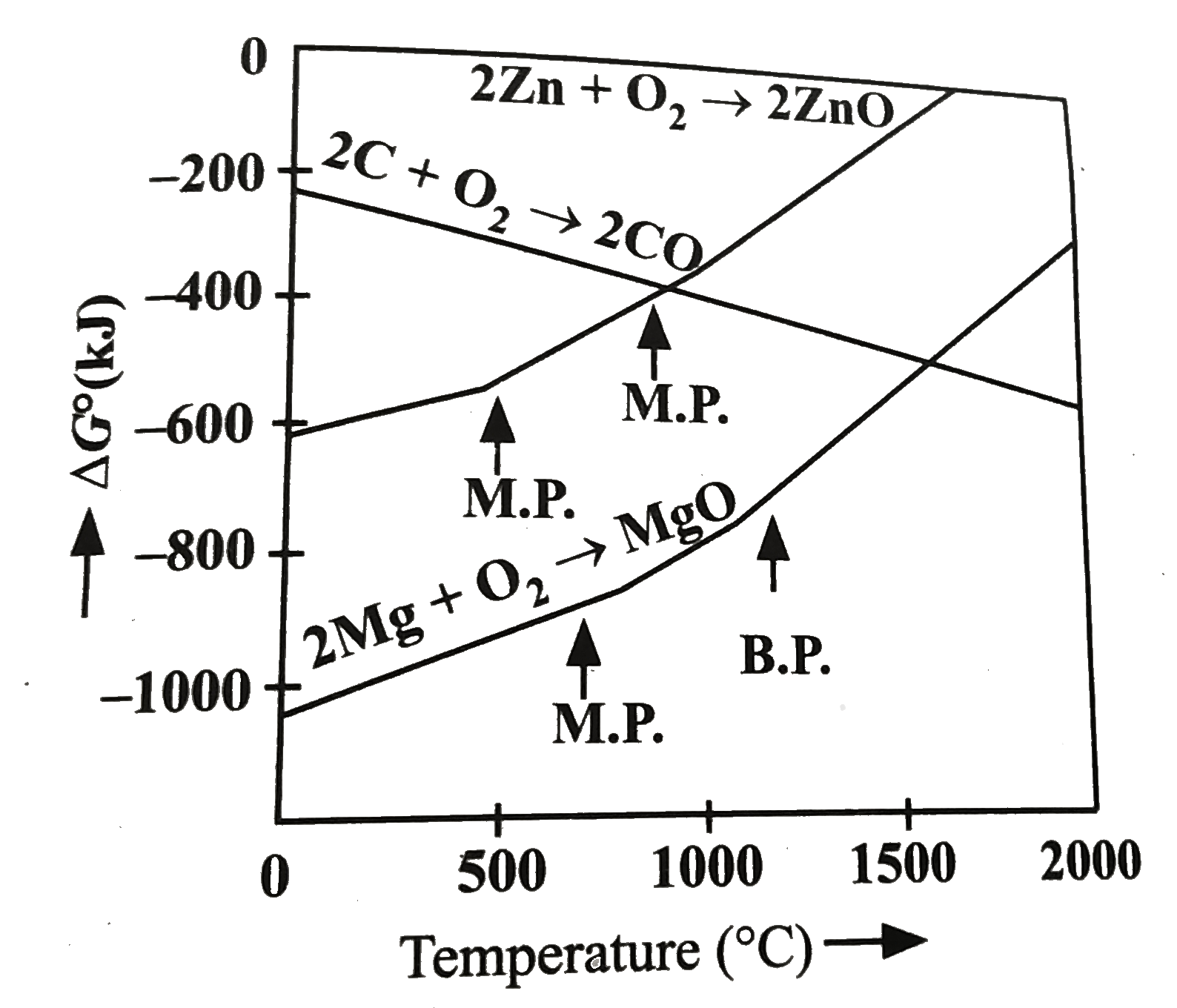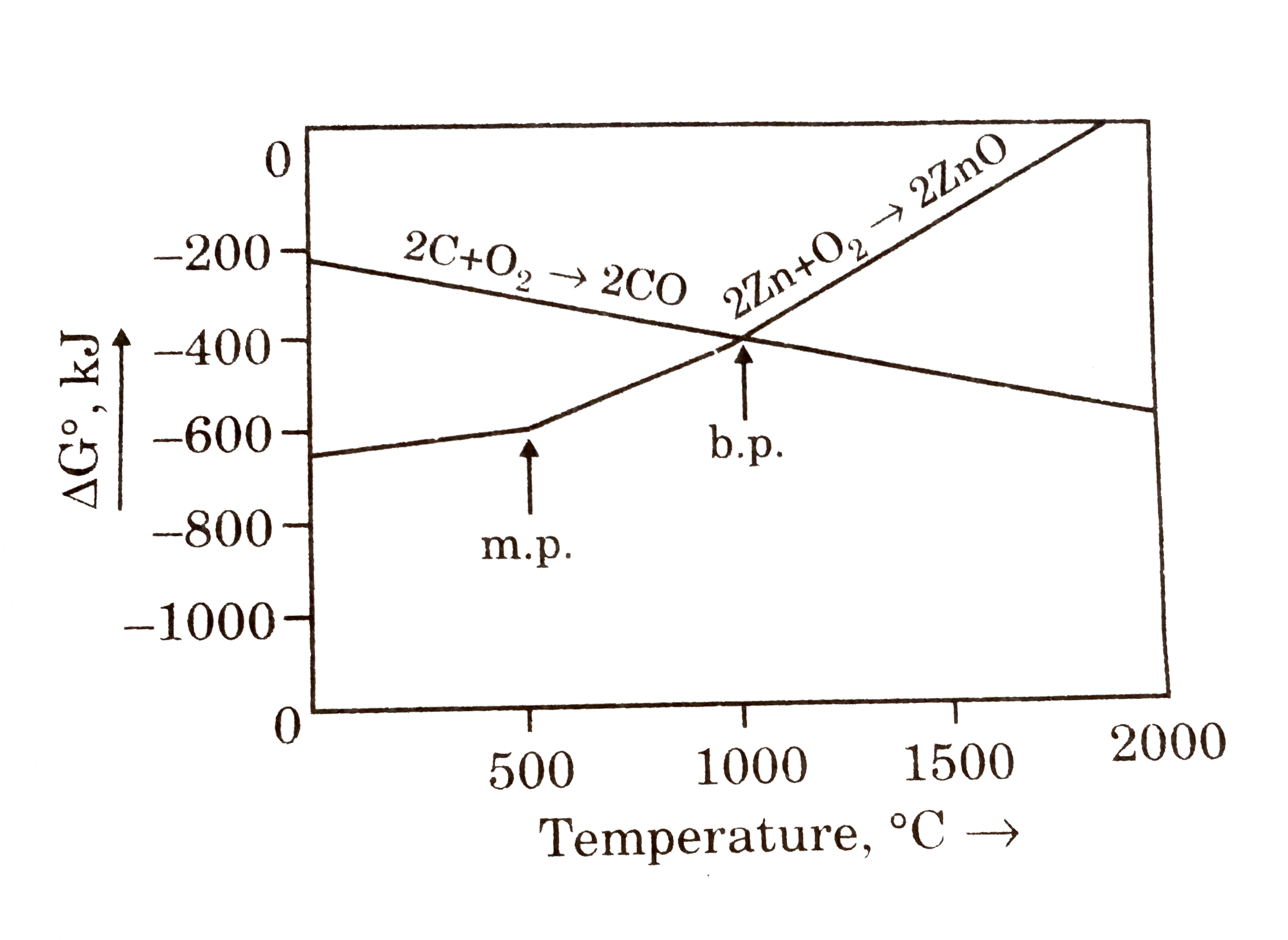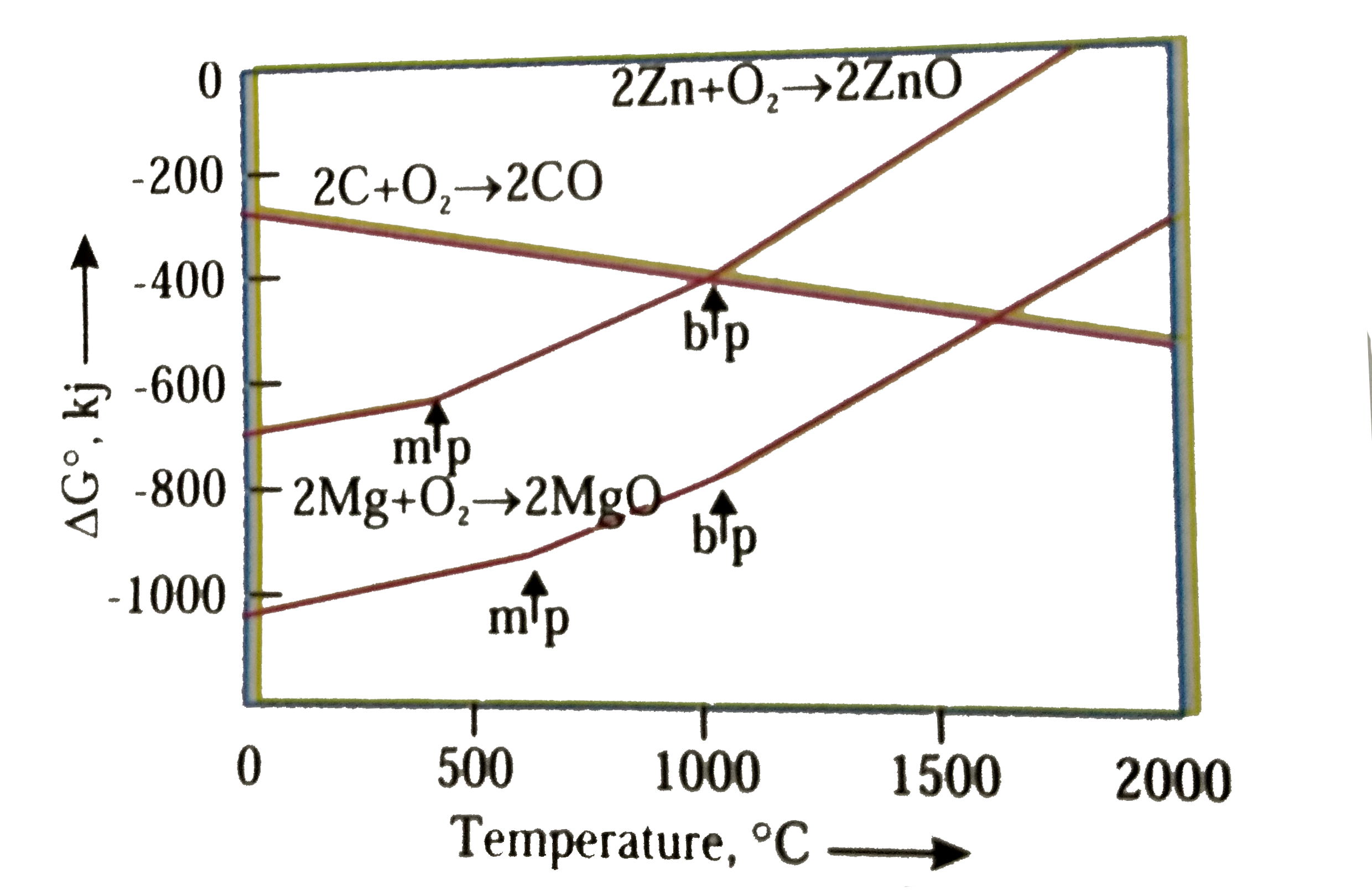Questions given below are based on the given diagram for extractive metallurgy.
(iv) At 1100∘C, which reaction is spontaneous to a maximum extent ?
MgO+C→Mg+CO
ZnO+C→Zn+CO
MgO+Zn→Mg+ZnO
ZnO+Mg→MgO+Zn
The correct Answer is:D
At 1100∘C,ΔrGӨ for the reaction
ZnO+Mg→MgO+Zn
has highest negative value, hence this reaction will be spontaneous to a maximum.
Topper's Solved these Questions
- BOOK - CENGAGE CHEMISTRYCHAPTER - GENERAL PRINCIPLES AND PROCESS OF ISOLATION OF ELEMENTSEXERCISE - Exs 1.1 (Subjective)25videos
GENERAL PRINCIPLES AND PROCESS OF ISOLATION OF ELEMENTS
- BOOK - CENGAGE CHEMISTRYCHAPTER - GENERAL PRINCIPLES AND PROCESS OF ISOLATION OF ELEMENTSEXERCISE - Exs 1.1 (Objective)14videos
GENERAL PRINCIPLES AND PROCESS OF ISOLATION OF ELEMENTS
- BOOK - CENGAGE CHEMISTRYCHAPTER - GENERAL PRINCIPLES AND PROCESS OF ISOLATION OF ELEMENTSEXERCISE - Archives (Subjective)14videos
GENERAL PRINCIPLES AND PROCESS OF ISOLATION OF ELEMENTS
- BOOK - CENGAGE CHEMISTRYCHAPTER - ELECTROCHEMISTRYEXERCISE - Archieves Subjective35videos
ELECTROCHEMISTRY
- BOOK - CENGAGE CHEMISTRYCHAPTER - GRIGNARD REAGENTS AND ORGANOMETALLIC REAGENTSEXERCISE - Exercises Archives (Linked Comprehension)1videos
GRIGNARD REAGENTS AND ORGANOMETALLIC REAGENTS
Similar Questions
Questions given below are based on the given diagram for extractive metallurgy.
(ii) At this temperature ΔfGӨ of the reaction is
ZnO+C→Zn+CO.
 .View Solution
.View SolutionQuestion given below are based on the given diagram of extractive metallurgy.

The point noted by arrow are the melting and boiling points of the metals zinc and magnesium. ΔG∘ as a function of temperature for some reaction of extractive metallurgy.
To make the following reduction process spontaneous, temperature should be:
ZnO+C→Zn+COView Solution
Knowledge Check
- Question 1 - Select One
Questions given below are based on the given diagram for extractive metallurgy.
(v) This method is known as :APyrometallurgyBParametallurgyCHydrometallurgyDSemimetallurgy - Question 2 - Select One
Questions given below are based on the given diagram for extractive metallurgy.
(iii) The make the following process spontaneous, temperature should be :
ZnO+C→Zn+CO.A<1000∘CB>1100∘CC<500∘CD>500∘C but<1000∘C - Question 3 - Select One
Questions given below are based on the given diagram for extractive metallurgy.
(i) At what approximate temperature, zinc and carbon have equal affinity for oxygen ?A1000∘CB1500∘CC500∘CD1200∘C
Question given below are based on the given diagram of extractive metallurgy.

The point noted by arrow are the melting and boiling points of the metals zinc and magnesium. ΔG∘ as a function of temperature for some reaction of extractive metallurgy.
At this temperature ΔG∘ of the reaction is:
ZnO+C→Zn+COView Solution
The points noted by arrows are melting and boiling points of the metal zinc and magnasium. ΔG0 as a function of temperature for some reaction of extractive metallurgy.
At 1000∘C, which reaction is spontaneous to a maximum extentView Solution
The points noted by arrows are melting and boiling points of the metal zinc and magnasium. ΔG0 as a function of temperature for some reaction of extractive metallurgy.
At 1000∘C, which reaction is spontaneous to a maximum extentView SolutionQuestion given below are based on the given diagram of extractive metallurgy.

The point noted by arrow are the melting and boiling points of the metals zinc and magnesium. ΔG∘ as a function of temperature for some reaction of extractive metallurgy.
At what temperature, zinc and carbon have equal affinity for oxygen?View SolutionA redox reaction is spontaneous in a given direction, if
View Solution

